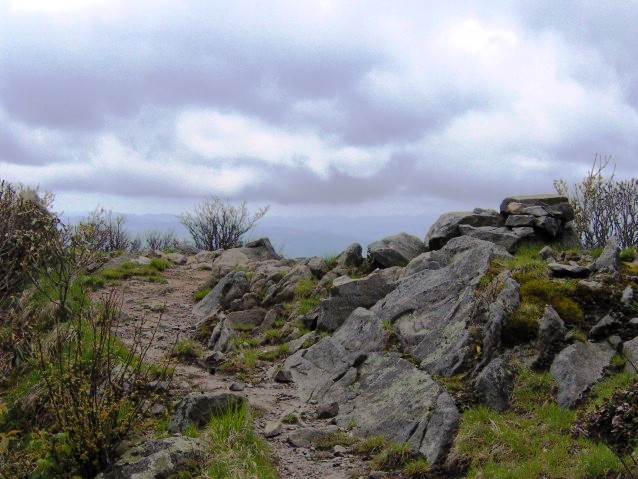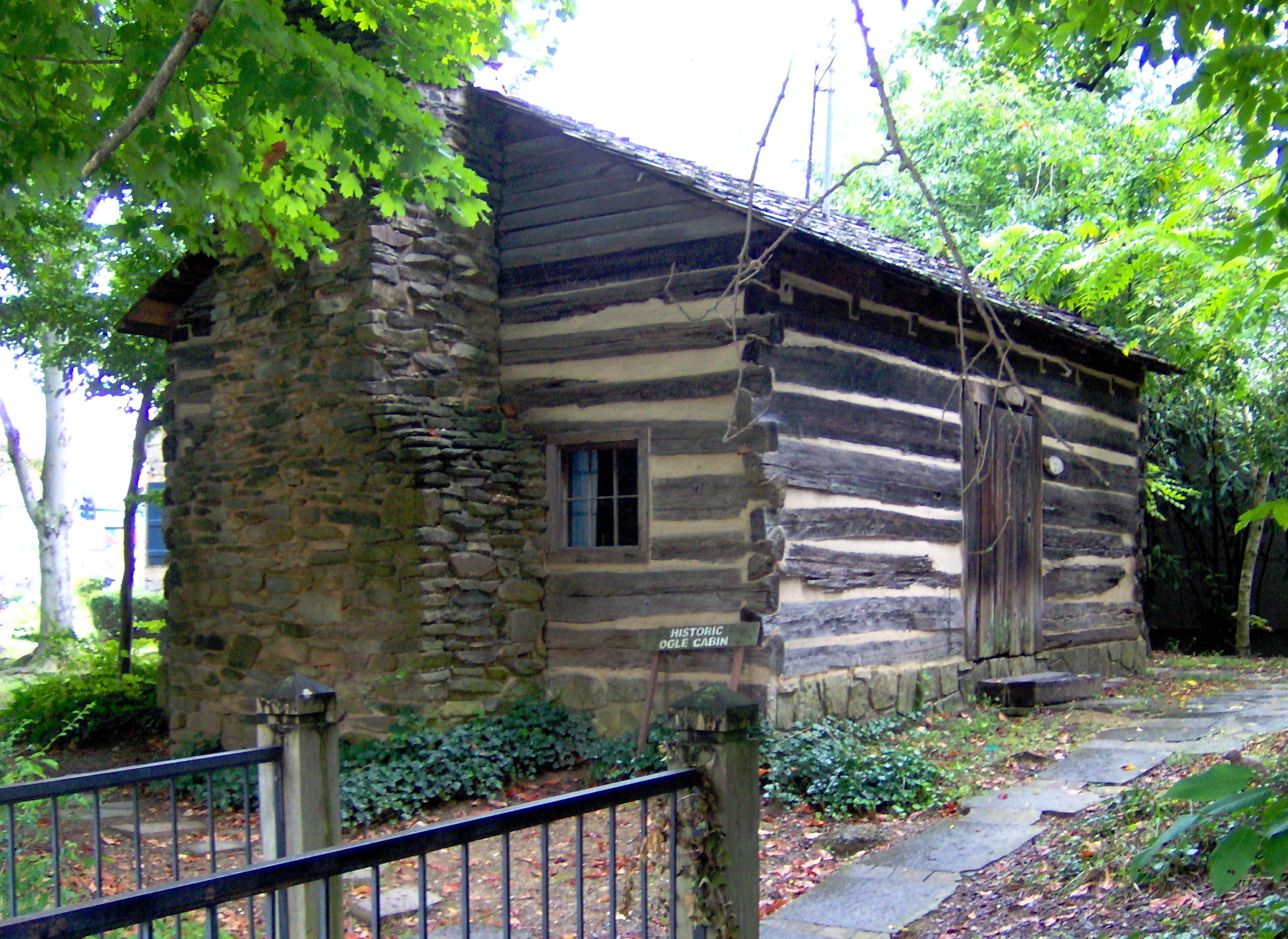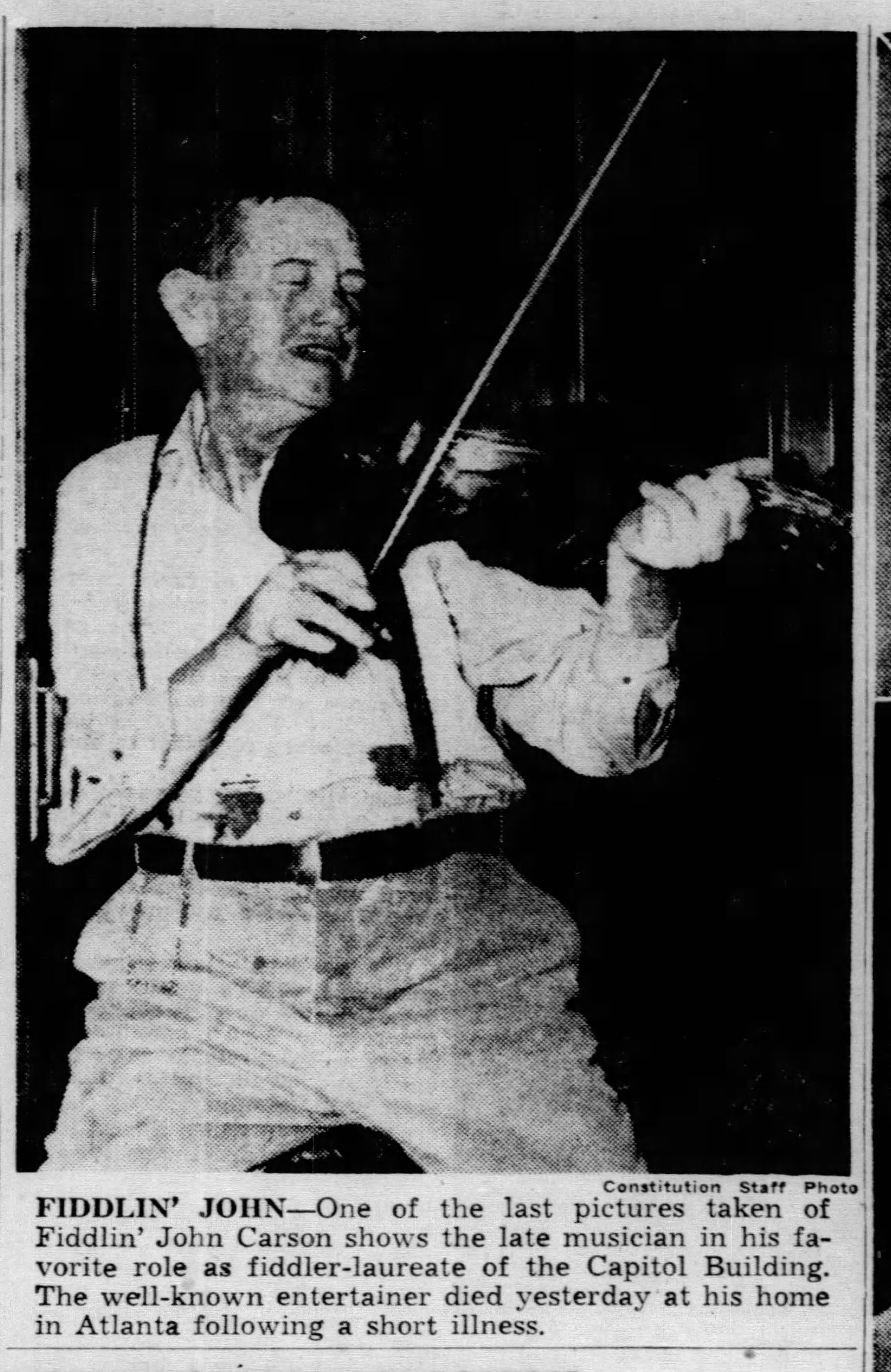|
Music Of East Tennessee
The Music of East Tennessee has a rich history, and played a major role in the development of modern country and bluegrass music. Bristol, known as "the birthplace of country music", (and home of the Birthplace of Country Music Museum), and Johnson City, notable for the Johnson City recording sessions, are both towns in the Tri-Cities region of East Tennessee. The music of East Tennessee is defined by country, gospel, and bluegrass artists, and has roots in Appalachian folk music. History Pioneers in the Great Smoky Mountains Pioneer settlers of the Great Smoky Mountains created old-time music ballads, before their relocation, by the creation of Great Smoky Mountains National Park. To help celebrate this heritage, Townsend, Gatlinburg, Pigeon Forge, and other locations in the Great Smoky Mountains, host annual festivals, some of which feature folk and bluegrass music. The Great Smoky Mountains Association also promotes events with mountain music, and has released several awa ... [...More Info...] [...Related Items...] OR: [Wikipedia] [Google] [Baidu] |
Country Music
Country (also called country and western) is a genre of popular music that originated in the Southern and Southwestern United States in the early 1920s. It primarily derives from blues, church music such as Southern gospel and spirituals, old-time, and American folk music forms including Appalachian, Cajun, Creole, and the cowboy Western music styles of Hawaiian, New Mexico, Red Dirt, Tejano, and Texas country. Country music often consists of ballads and honky-tonk dance tunes with generally simple form, folk lyrics, and harmonies often accompanied by string instruments such as electric and acoustic guitars, steel guitars (such as pedal steels and dobros), banjos, and fiddles as well as harmonicas. Blues modes have been used extensively throughout its recorded history. The term ''country music'' gained popularity in the 1940s in preference to '' hillbilly music'', with "country music" being used today to describe many styles and subgenres. It came to encomp ... [...More Info...] [...Related Items...] OR: [Wikipedia] [Google] [Baidu] |
Gatlinburg, Tennessee
Gatlinburg is a mountain resort city in Sevier County, Tennessee, United States. It is located southeast of Knoxville and had a population of 3,944 at the 2010 Census and a U.S. Census population of 3,577 in 2020. It is a popular vacation resort, as it rests on the border of Great Smoky Mountains National Park along U.S. Route 441, which connects to Cherokee, North Carolina, on the southeast side of the national park. Prior to incorporation, the town was known as White Oak Flats, or just simply White Oak. History Early history For centuries, Cherokee hunters, as well as other Native American hunters before them, used a footpath known as Indian Gap Trail to access the abundant game in the forests and coves of the Smokies. This trail connected the Great Indian Warpath with Rutherford Indian Trace, following the West Fork of the Little Pigeon River from modern-day Sevierville through modern-day Pigeon Forge, Gatlinburg, and the Sugarlands, crossing the crest of the Smokies a ... [...More Info...] [...Related Items...] OR: [Wikipedia] [Google] [Baidu] |
Cumberland Mountains
The Cumberland Mountains are a mountain range in the southeastern section of the Appalachian Mountains. They are located in western Virginia, southwestern West Virginia, the eastern edges of Kentucky, and eastern middle Tennessee, including the Crab Orchard Mountains. Their highest peak, with an elevation of above mean sea level, is High Knob, which is located near Norton, Virginia. According to the USGS, the Cumberland Mountain range is long and wide, bounded by the Russell Fork on the northeast, the Pound River and Powell River on the southeast, Cove Creek on the southwest, and Tackett Creek, the Cumberland River, Poor Fork Cumberland River, and Elkhorn Creek on the northwest. The crest of the range forms the Kentucky and Virginia boundary from the Tennessee border to the Russell Fork River. Variant names of the Cumberland Mountains include Cumberland Mountain, Cumberland Range, Ouasioto Mountains, Ouasiota Mountains, Laurel Mountain, and Pine Mountain. They are name ... [...More Info...] [...Related Items...] OR: [Wikipedia] [Google] [Baidu] |
Cumberland Gap
The Cumberland Gap is a pass through the long ridge of the Cumberland Mountains, within the Appalachian Mountains, near the junction of the U.S. states of Kentucky, Virginia, and Tennessee. It is famous in American colonial history for its role as a key passageway through the lower central Appalachians. Long used by Native American nations, the Cumberland Gap was brought to the attention of settlers in 1750 by Thomas Walker, a Virginia physician and explorer. The path was used by a team of frontiersmen led by Daniel Boone, making it accessible to pioneers who used it to journey into the western frontiers of Kentucky and Tennessee. It was an important part of the Wilderness Road and is now part of the Cumberland Gap National Historical Park. Geography The Cumberland Gap is one of many passes in the Appalachian Mountains, but the only one in the continuous Cumberland Mountain ridgeline. It lies within Cumberland Gap National Historical Park and is located on the border of ... [...More Info...] [...Related Items...] OR: [Wikipedia] [Google] [Baidu] |
Clarence Ashley
Clarence "Tom" Ashley (September 29, 1895 – June 2, 1967) was an American musician and singer, who played the clawhammer banjo and the guitar. He began performing at medicine shows in the Appalachia, Southern Appalachian region as early as 1911, and gained initial fame during the late 1920s as both a solo recording artist and as a member of various String band (American music), string bands. After his "rediscovery" during the American folk music revival, folk revival of the 1960s, Ashley spent the last years of his life playing at folk music concerts, including appearances at Carnegie Hall in New York and at the Newport Folk Festival in Rhode Island.Colin Larkin (ed.), "Clarence Tom Ashley", ''The Encyclopedia of Popular Music'', Vol. 1 (New York: Oxford University Press, 2006), p. 272, Biography Early life Ashley was born Clarence Earl McCurry in Bristol, Tennessee in 1895, the only child of George McCurry and Rose-Belle Ashley. Those who knew George McCurry described him var ... [...More Info...] [...Related Items...] OR: [Wikipedia] [Google] [Baidu] |
Fiddlin' John Carson
"Fiddlin'" John Carson (March 23, 1868 – December 11, 1949) was an American old-time fiddler and singer who recorded what is widely considered to be the first country music song featuring vocals and lyrics. Early life Carson was born near McCaysville in Fannin County, Georgia. He moved to Cobb County in his youth. His father worked as a section foreman for the Western and Atlantic Railroad Company. In his teens, Carson learned to play the fiddle, using an old Stradivari-copy violin brought from Ireland in the early 18th century.Malone, McCulloh 1975, p. 17.Miller 1996, p. 73. In his teens, he worked as a racehorse jockey. In 1894, Carson married, and a couple of years later, in 1900, he began working for the Exposition Cotton Mills in Atlanta, followed by work in other cotton mills of the Atlanta area for the next twenty years, eventually being promoted to foreman.Wolfe 2001, p. 65. In 1911, Carson's family moved to Cabbagetown, Georgia and he and his childre ... [...More Info...] [...Related Items...] OR: [Wikipedia] [Google] [Baidu] |
Charlie Bowman
Charles Thomas Bowman (July 30, 1889 – May 20, 1962) was an American old-time fiddle player and string band leader. He was a major influence on the distinctive fiddle sound that helped shape and develop early Country music in the 1920s and 1930s. After delivering a series of performances that won him the first prize in dozens of fiddle contests across Southern Appalachia in the early 1920s, Bowman toured and recorded with several string bands and vaudeville acts before forming his own band, the Blue Ridge Music Makers, in 1935. In his career, he would be associated with country and bluegrass pioneers such as Uncle Dave Macon, Fiddlin' John Carson, Roy Acuff, Charlie Poole, and Bill Monroe.Bob Cox and James Bowman,Charlie Bowman: East Tennessee Old-time Fiddler — A Biographical Sketch. Retrieved: 11 December 2008. Early life Bowman was born July 30, 1889, in Gray Station, Tennessee, a small community approximately north of Johnson City. He first learned to play banj ... [...More Info...] [...Related Items...] OR: [Wikipedia] [Google] [Baidu] |
Uncle Am Stuart
Ambrose Gaines "Uncle Am" Stuart (1853–1926) was an American Old-time fiddle player. After winning various fiddle contests across the Southern Appalachian region in the late 19th and early 20th centuries, Stuart made several recordings in June 1924 that would later prove influential in the development of early Country music.Uncle Am RecordsUncle Am Stuart – Biography 2005. Retrieved: 1 August 2009. Stuart was born near Morristown, Tennessee in 1853. He learned to play fiddle at a young age, picking up a number of tunes from Civil War soldiers who passed through the area in the 1860s, and learning techniques while wandering through post-Civil War African-American camps. His later style represented a fusion of Civil War tunes and Appalachian folk music. By the time he had gained regional fame as a fiddle player in the early 1900s, Stuart was working as a safe and vault salesman. Noting the success of the Okeh recordings of Fiddlin' John Carson in 1923, Vocalion Re ... [...More Info...] [...Related Items...] OR: [Wikipedia] [Google] [Baidu] |
Cumberland Gap (folk Song)
"Cumberland Gap" is an Appalachian folk song that likely dates to the latter half of the 19th century and was first recorded in 1924. The song is typically played on banjo or fiddle, and well-known versions of the song include instrumental versions as well as versions with lyrics. A version of the song appeared in the 1934 book, ''American Ballads and Folk Songs'', by folk song collector John Lomax. Woody Guthrie recorded a version of the song at his Folkways sessions in the mid-1940s, and the song saw a resurgence in popularity with the rise of bluegrass and the American folk music revival in the 1950s. In 1957, the British musician Lonnie Donegan had a No. 1 UK hit with a skiffle version of "Cumberland Gap". The song's title refers to the Cumberland Gap, a mountain pass in the Appalachian Mountains at the juncture of the states of Tennessee, Virginia, and Kentucky. The gap was used in the latter half of the 18th century by westward-bound migrants travelling from the origina ... [...More Info...] [...Related Items...] OR: [Wikipedia] [Google] [Baidu] |
Mountain City, Tennessee
Mountain City is a town in and the county seat of Johnson County, Tennessee, United States. The population was 2,383 at the 2000 census and 2,531 at the 2010 census. It is the northeasternmost county seat in Tennessee. In addition, at an elevation of , it has the distinction of being the highest incorporated city in the state. History When the first Euro-American explorers arrived in what is now the Mountain City area in the late 17th century, well-worn Native American trails passed through the area. In 1949, workers at the Maymead quarry (just south of Mountain City) discovered a cave with several early Mississippian-era (ca. 1000 A.D.) burials inside. The Needham and Arthur expedition of 1673 is believed to have passed through the area, making use of the gap at Trade to the south. Explorer Daniel Boone made use of the same gap on an expedition to what is now Kentucky in 1769, and today part of the Daniel Boone Heritage Trail— which follows Boone's route— passes ... [...More Info...] [...Related Items...] OR: [Wikipedia] [Google] [Baidu] |
Norris, Tennessee
Norris is a city in Anderson County, Tennessee, United States. Its population was 1,599 at the 2020 census. It is included in the Knoxville, Tennessee Metropolitan Statistical Area. Norris was built as a model planned community by the Tennessee Valley Authority (TVA) in 1933 to house workers building Norris Dam on the Clinch River. It is named in honor of Nebraska Senator George W. Norris, a long-term supporter of the TVA. History TVA chairman Arthur Morgan envisioned Norris as a model of cooperative, egalitarian living.An American Ideal TVA Heritage, TVA website, accessed September 27, 2011 The city design was developed by TVA staff,Norris Historic District Cumberland River Valley C ... [...More Info...] [...Related Items...] OR: [Wikipedia] [Google] [Baidu] |
Museum Of Appalachia
The Museum of Appalachia, located in Norris, Tennessee, north of Knoxville, is a living history museum that interprets the pioneer and early 20th-century period of the Southern Appalachian region of the United States. Recently named an Affiliate of the Smithsonian Institution, the museum is a collection of more than 30 historic buildings rescued from neglect and decay and gathered onto of picturesque pastures and fields. The museum also preserves and displays thousands of authentic relics, maintains one of the nation's largest folk art collections, and hosts performances of traditional Appalachian music and annual demonstrations by hundreds of regional craftsmen. The museum was established in the 1960s by John Rice Irwin, an East Tennessee educator and businessman, who has followed the basic philosophy of preserving not only structures and artifacts relevant to the region's history, but also preserving each item's individual history— who owned it, when and how it was cr ... [...More Info...] [...Related Items...] OR: [Wikipedia] [Google] [Baidu] |








